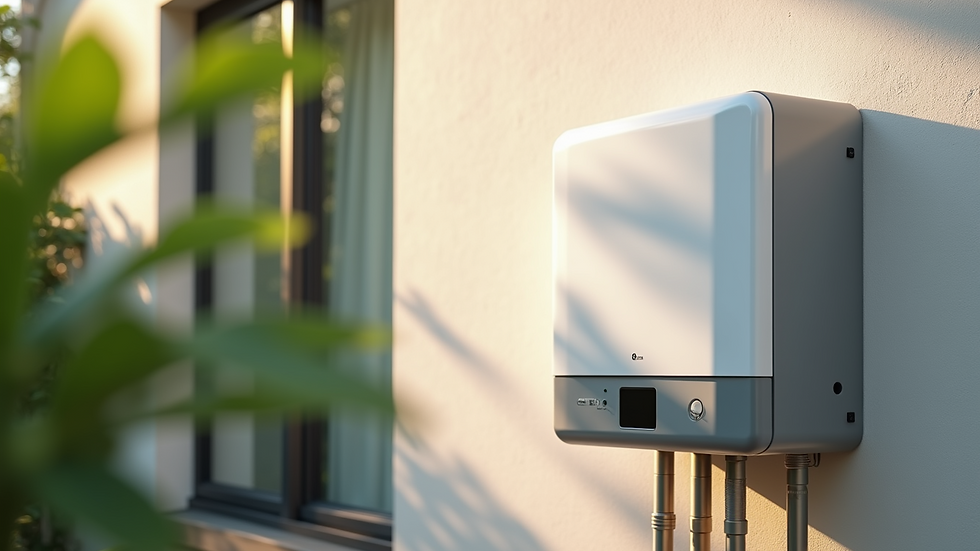Boost Solar Efficiency with Energy-Efficient Inverters
- Dale Rolph
- Sep 3
- 4 min read
When it comes to maximizing the power of your solar panels, the inverter plays a crucial role. It’s the heart of your solar energy system, converting the direct current (DC) generated by your panels into usable alternating current (AC) for your home or business. But not all inverters are created equal. Choosing the right solar system inverters can significantly boost your solar efficiency and save you money in the long run.
Let’s dive into how these devices work, why they matter, and how you can optimize your solar setup with the best technology available.
Understanding Solar System Inverters and Their Importance
Solar system inverters are the unsung heroes of solar power. Without them, the electricity your panels produce would be unusable for everyday appliances. But beyond just conversion, modern inverters offer features that enhance performance, monitor system health, and improve energy output.
There are three main types of solar inverters:
String Inverters: These are the most common and cost-effective. They connect a series of solar panels (a string) and convert their combined DC output into AC.
Microinverters: Installed on each panel individually, microinverters optimize the output of each panel separately. This is especially useful if your panels face different directions or experience shading.
Power Optimizers: These work alongside string inverters to maximize the output of each panel, similar to microinverters but at a lower cost.
Choosing the right inverter depends on your system size, budget, and site conditions. For example, if your roof has shading issues or panels face multiple directions, microinverters or power optimizers can significantly increase your energy harvest.

How Solar System Inverters Impact Your Energy Savings
The efficiency of your solar system inverters directly affects how much electricity you can use or sell back to the grid. Even a small efficiency gain can translate into hundreds of dollars saved over the system’s lifetime.
Here’s why inverter efficiency matters:
Conversion Efficiency: This is the percentage of DC power converted to AC power. High-quality inverters typically have efficiencies above 95%.
Maximum Power Point Tracking (MPPT): This technology ensures your panels operate at their optimal voltage and current, extracting the maximum possible power.
Reduced Energy Losses: Advanced inverters minimize energy losses during conversion and transmission.
By investing in energy-efficient inverters, you ensure your solar system performs at its best. These inverters not only convert power efficiently but also come with smart features like remote monitoring and fault detection, helping you maintain peak performance.
What is the 33% Rule in Solar Panels?
You might have heard about the 33% rule when sizing your solar system. This guideline suggests that your inverter’s capacity should be about 33% larger than the total wattage of your solar panels. But why?
Solar panels rarely operate at their peak capacity due to factors like temperature, shading, and aging. By oversizing the inverter, you allow it to handle occasional power surges without clipping or losing energy. This means:
Your system can capture more energy during sunny periods.
The inverter runs more efficiently and with less stress.
You reduce the risk of inverter overload and downtime.
For example, if your solar array is rated at 6 kW, a 8 kW inverter would be a smart choice. This approach balances cost and performance, ensuring you get the most from your investment.

Practical Tips to Boost Your Solar System’s Efficiency
Optimizing your solar system isn’t just about picking the right inverter. Here are some actionable steps you can take:
Regular Maintenance: Keep your panels clean and free from debris. Dirt and dust can reduce output by up to 25%.
Monitor Performance: Use inverter monitoring tools to track energy production and spot issues early.
Shade Management: Trim trees or relocate objects that cast shadows on your panels.
Upgrade Components: If your inverter is old or inefficient, consider upgrading to a newer model with better technology.
Professional Checkups: Schedule periodic inspections with solar experts to ensure your system is running smoothly.
By combining these practices with the right inverter, you’ll enjoy higher energy yields and a longer system lifespan.

Embracing the Future with Smart Solar Inverters
The solar industry is evolving fast, and so are inverters. Today’s smart inverters do more than just convert power. They integrate with home energy management systems, support battery storage, and even help stabilize the grid.
Some exciting features include:
Remote Diagnostics: Quickly identify and fix problems without waiting for a technician.
Grid Support Functions: Help utilities manage voltage and frequency, making solar power more reliable.
Battery Compatibility: Seamlessly connect with home batteries to store excess energy for nighttime use.
Investing in these advanced solar system inverters means you’re not just saving energy today—you’re future-proofing your home or business for tomorrow’s energy landscape.
Taking the Next Step Toward Solar Efficiency
If you’re ready to boost your solar system’s performance, start by evaluating your current inverter. Is it efficient? Does it have the features you need? If not, upgrading to energy-efficient inverters could be the game-changer you need.
Remember, solar power is a long-term investment. The right inverter can make all the difference in how much energy you save and how smoothly your system runs. Don’t hesitate to reach out to professionals who can guide you through the process and help you get the most from your solar setup.
Together, we can harness the sun’s power more effectively and enjoy cleaner, cheaper energy for years to come. Why wait? Your solar system’s full potential is just an inverter upgrade away.




Comments